A menu lists dishes served at a restaurant or food joint. The menu is the first thing customers interact with when they’re dining. A restaurant menu template specifies a restaurant’s menu’s layout, fonts, colors, and content. The idea behind a restaurant’s menu layout is to inform customers of all the dishes or meals served at a restaurant through a single tool.
A menu can be a single page or multiple pages, with each page containing different items on the menu. The menu makes it easier for customers to know what they are ordering and make choices they would prefer.
Besides being a communication/information tool, a menu is a marketing tool. If created to match the restaurant’s brand and personalized with unique themes, it can play a huge role in convincing customers to try out different meals.
A customer’s choice of the restaurant will often depend on its proximity to their home – most diners prefer restaurants 10 minutes or so from their residence. However, converting them to repeat customers may come down to the options presented to customers on the menu. They may end up at other restaurants around the corner if they are not retained.
There are a lot of restaurants that use templates. However, when customizing the menu, consider what other restaurants are offering in terms of cuisine, themes and when they offer their specials. Then create a menu that gives the restaurant a competitive advantage. Therefore, menus can hugely impact revenue.
This article will explore best practices when creating a professional restaurant menu.
Free Restaurant Menu Templates
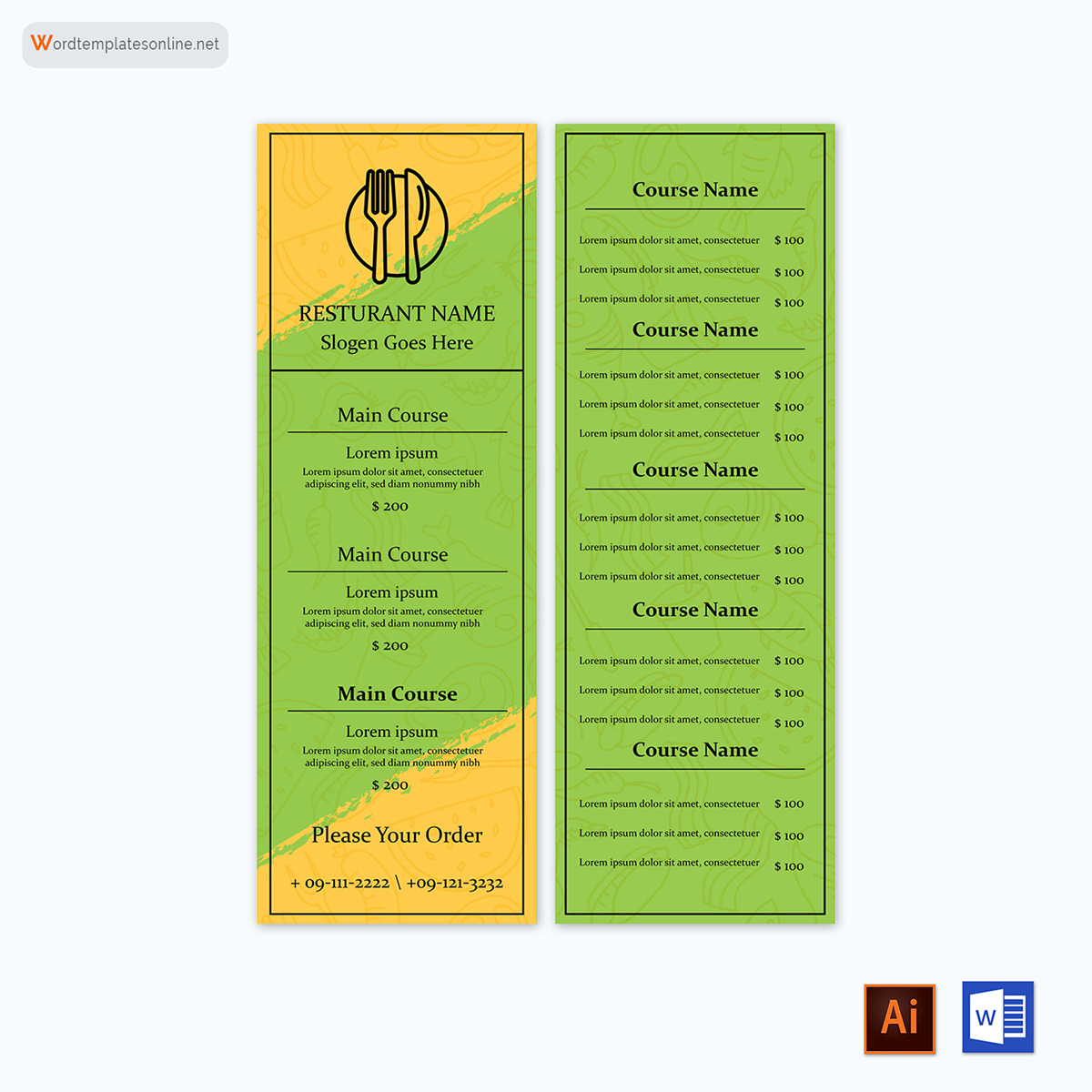
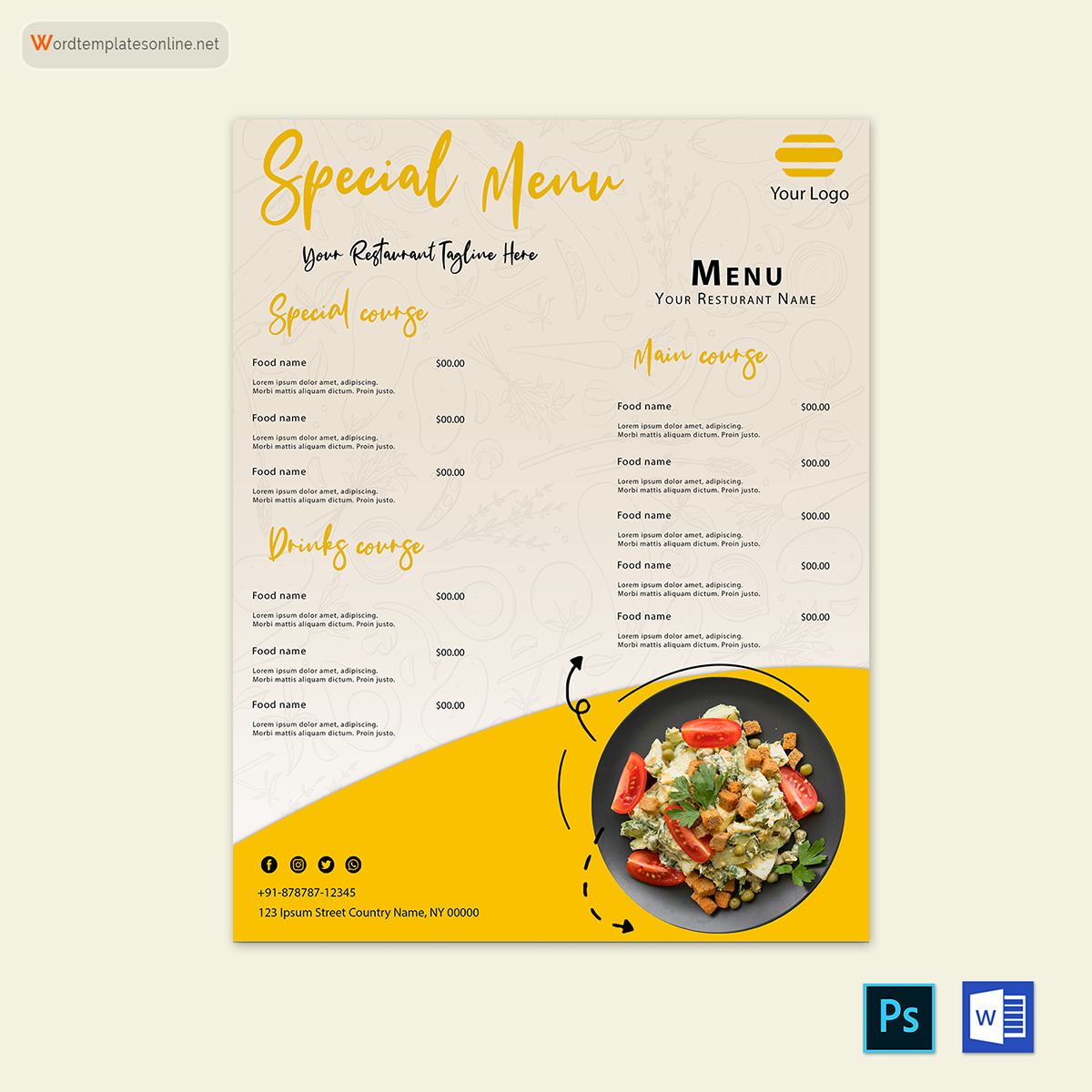
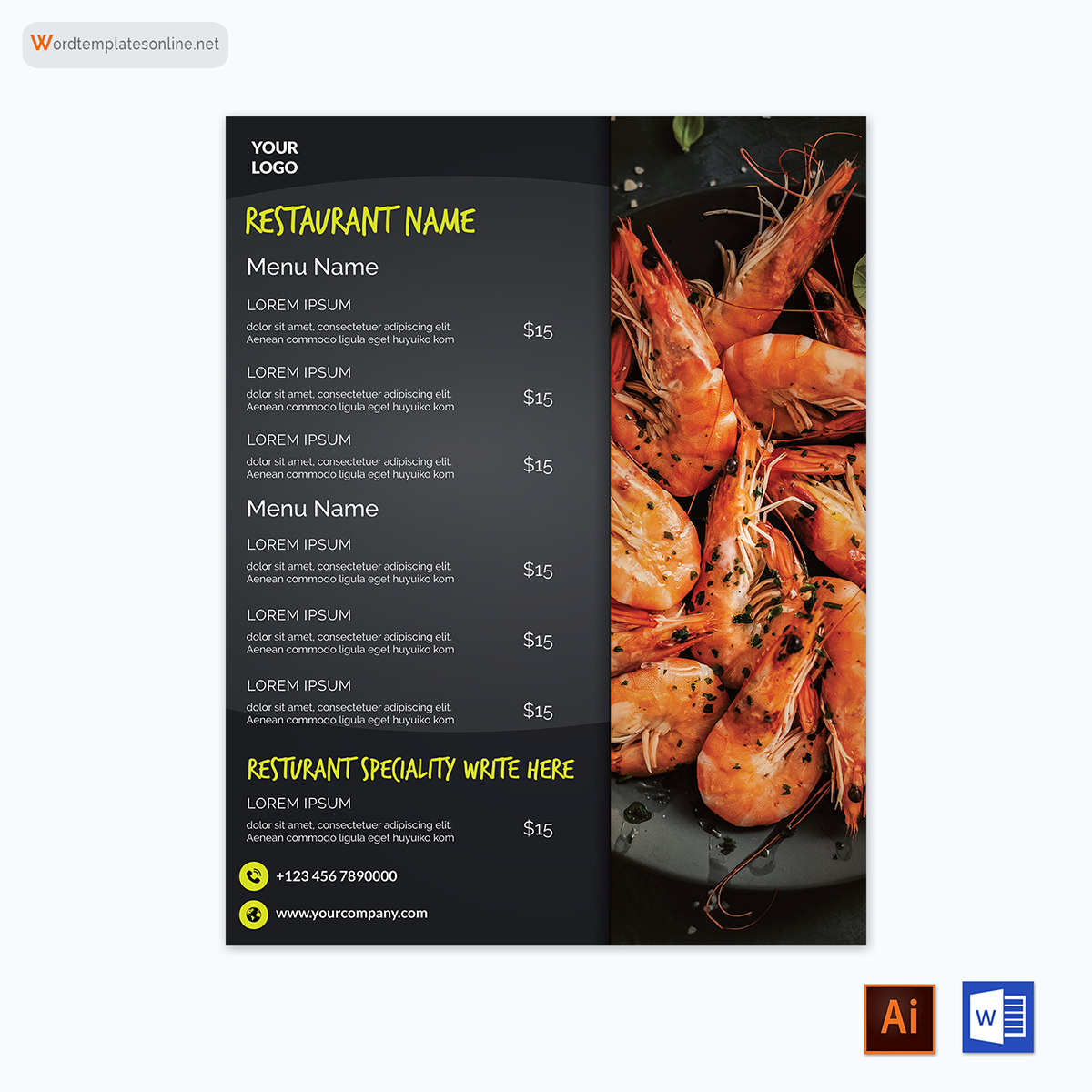
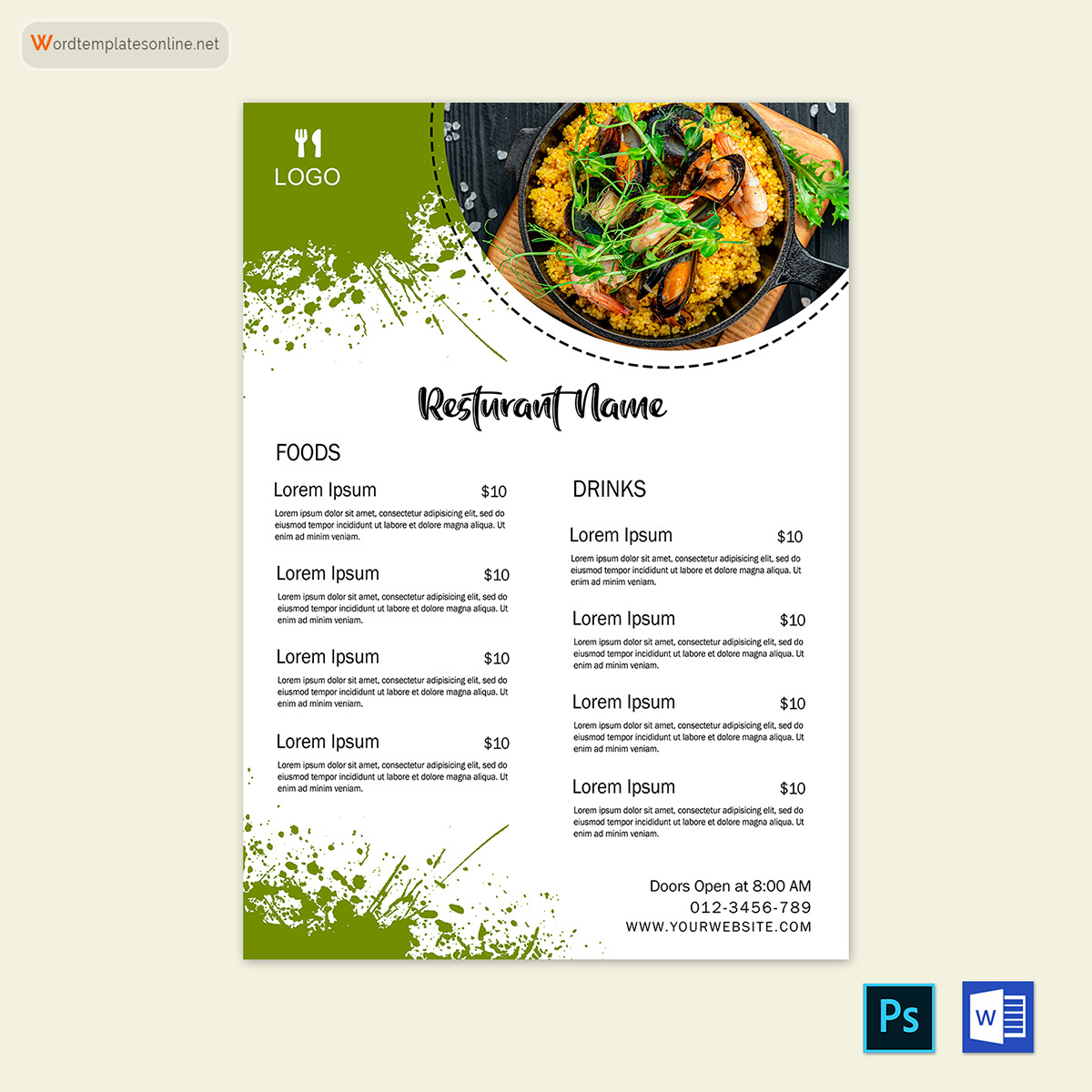
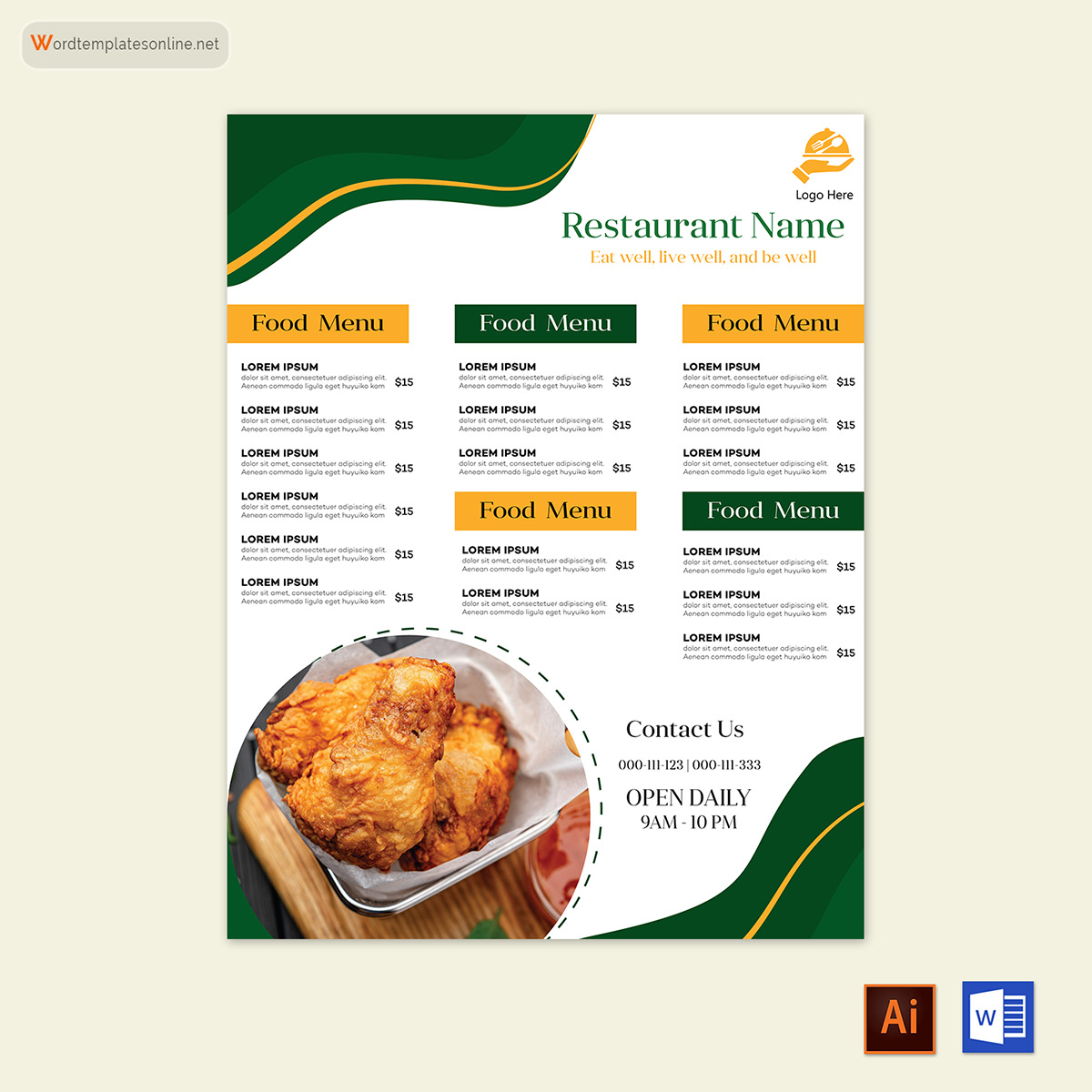
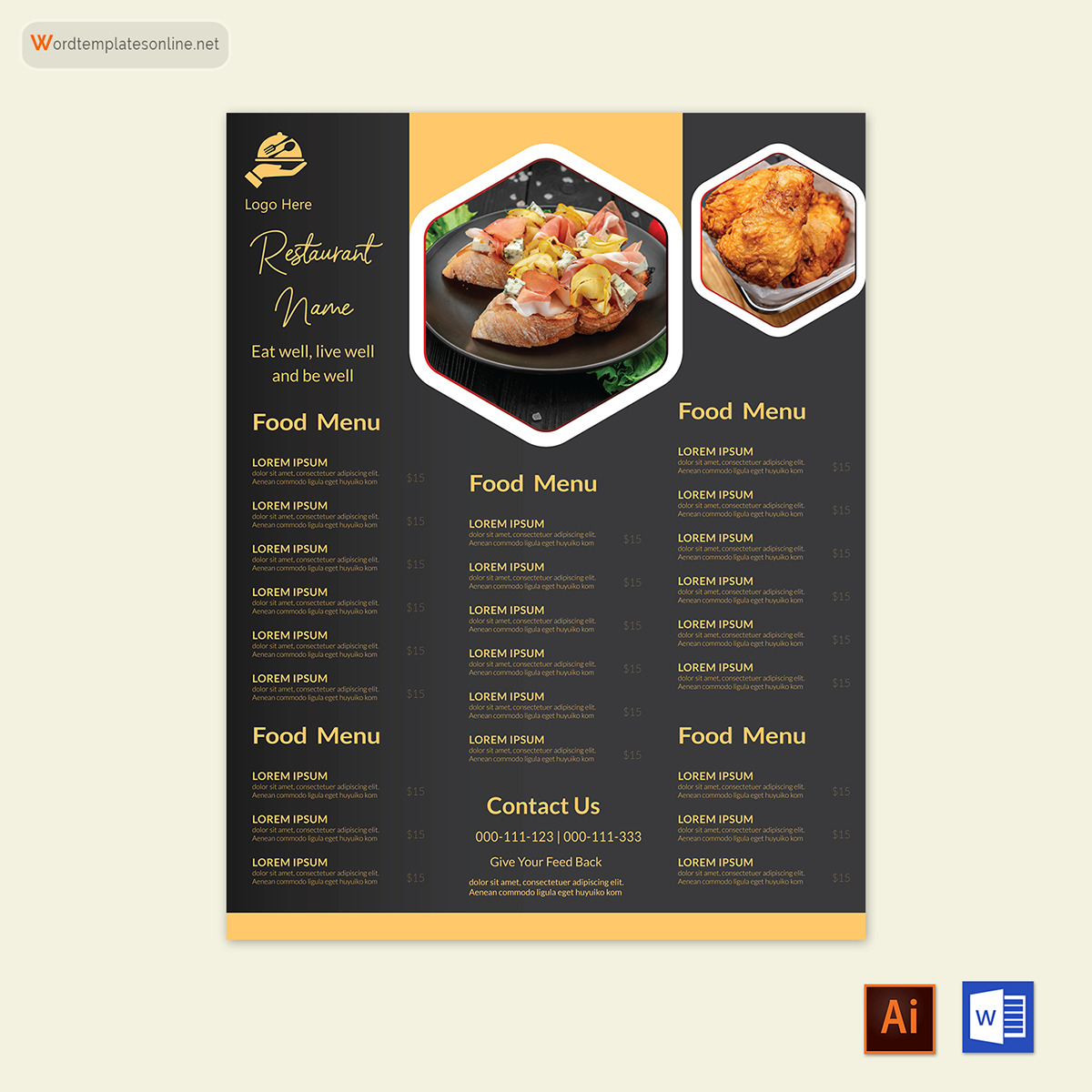
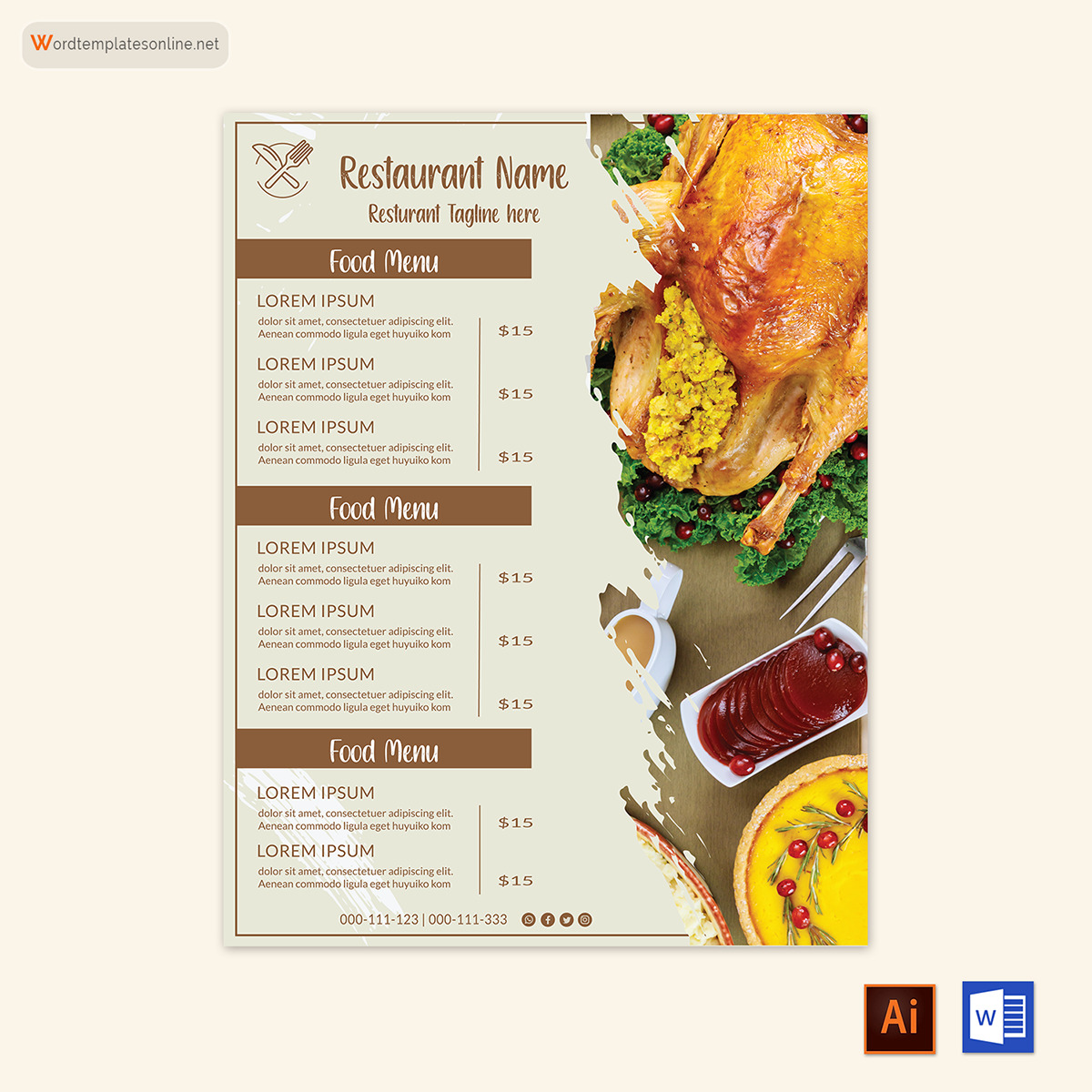
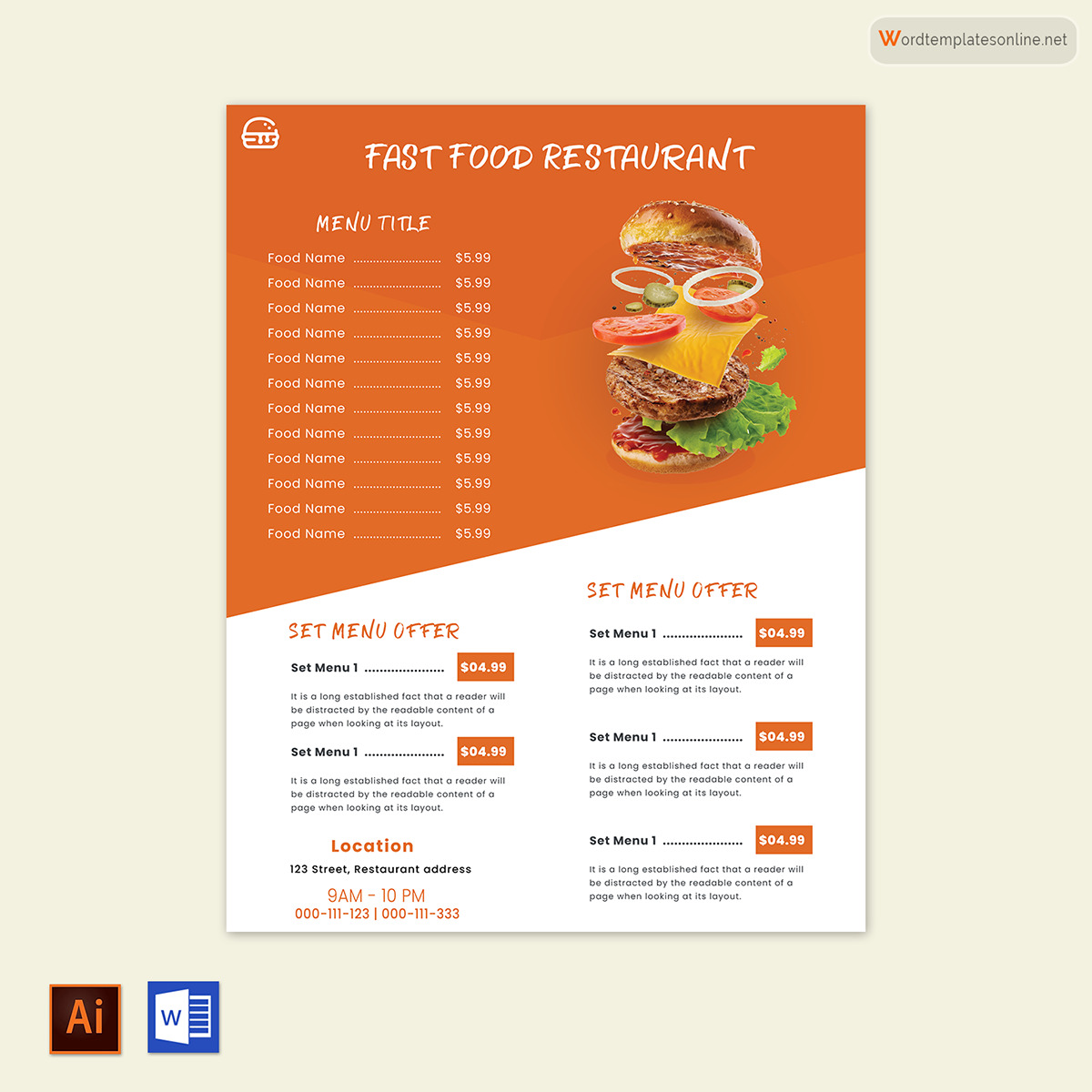
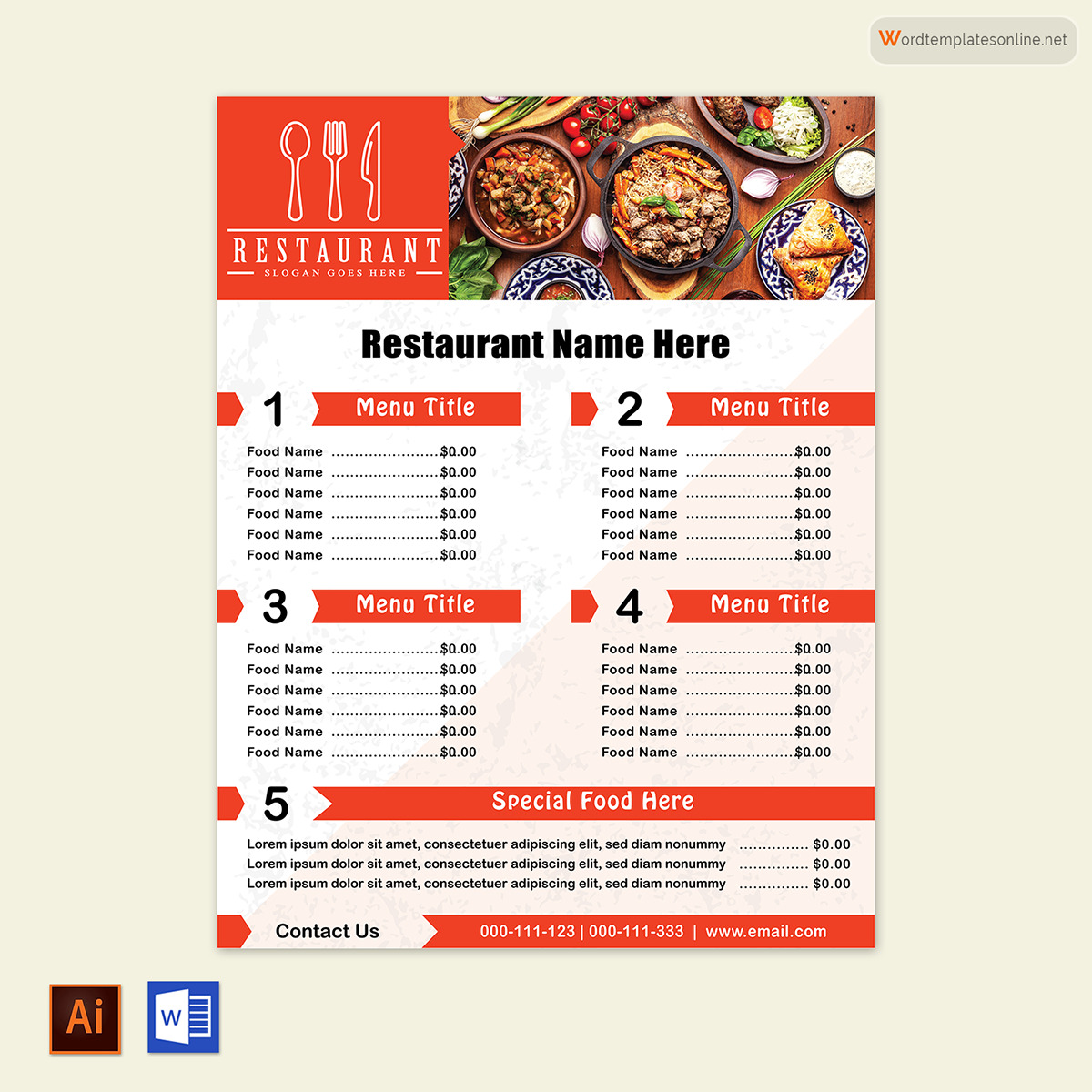
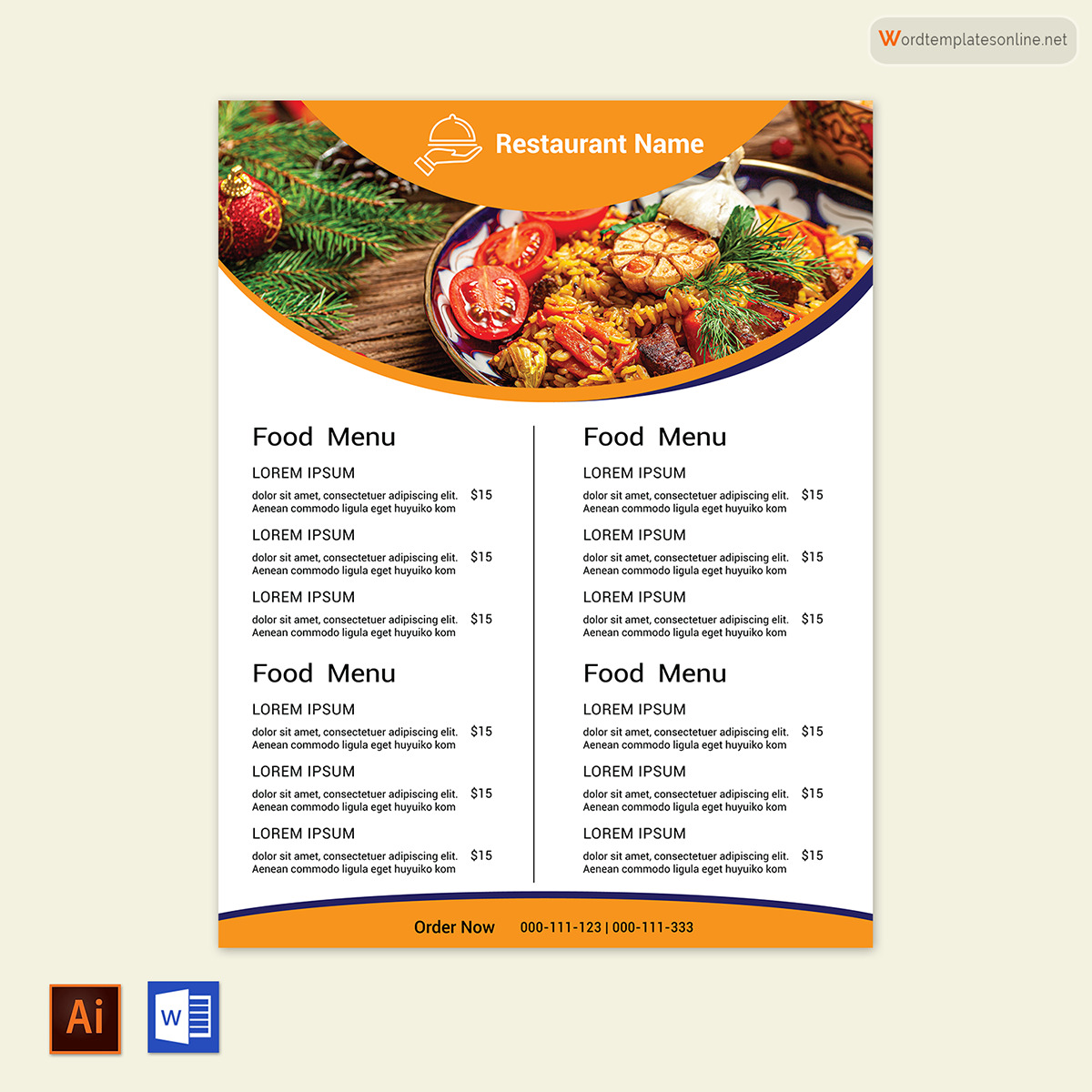
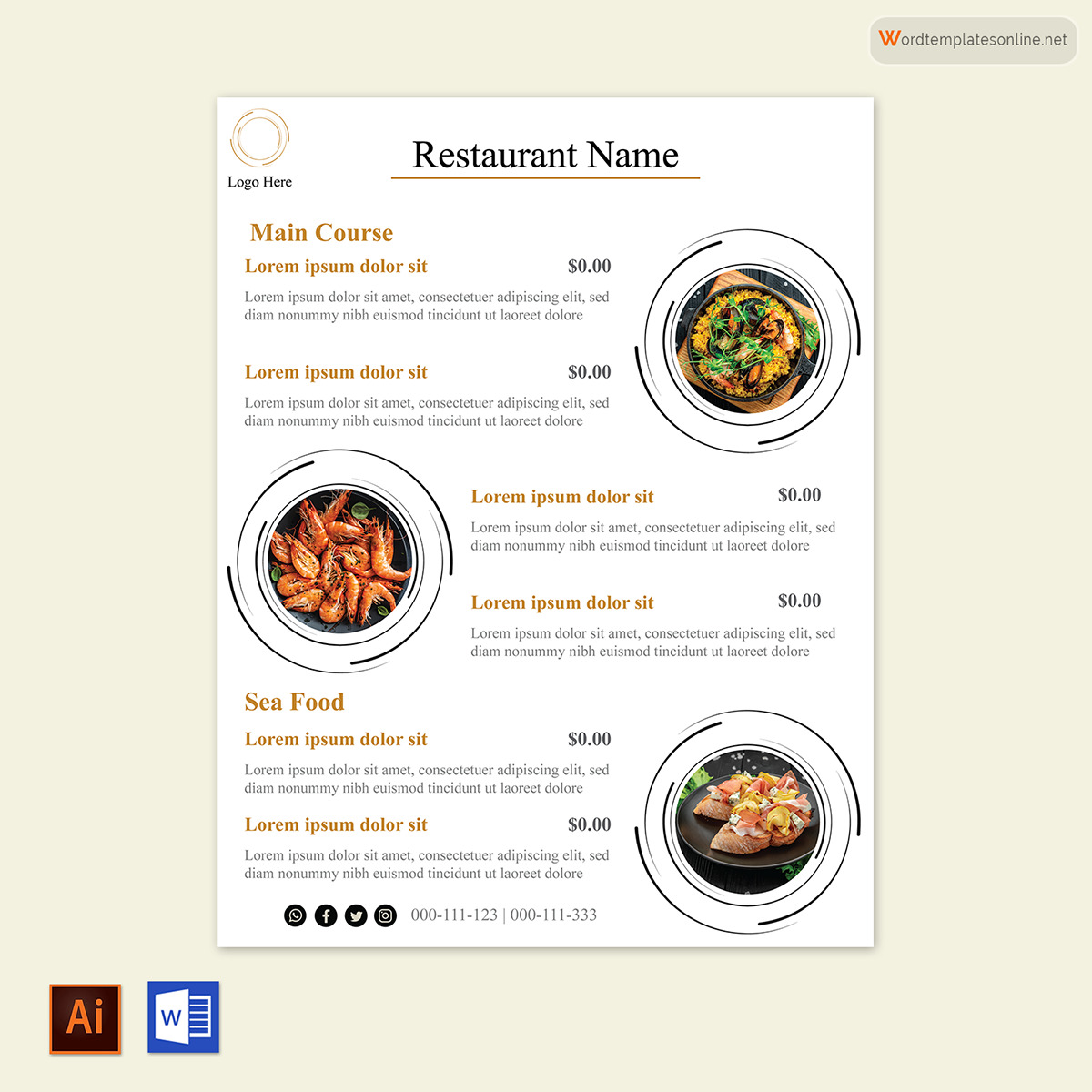
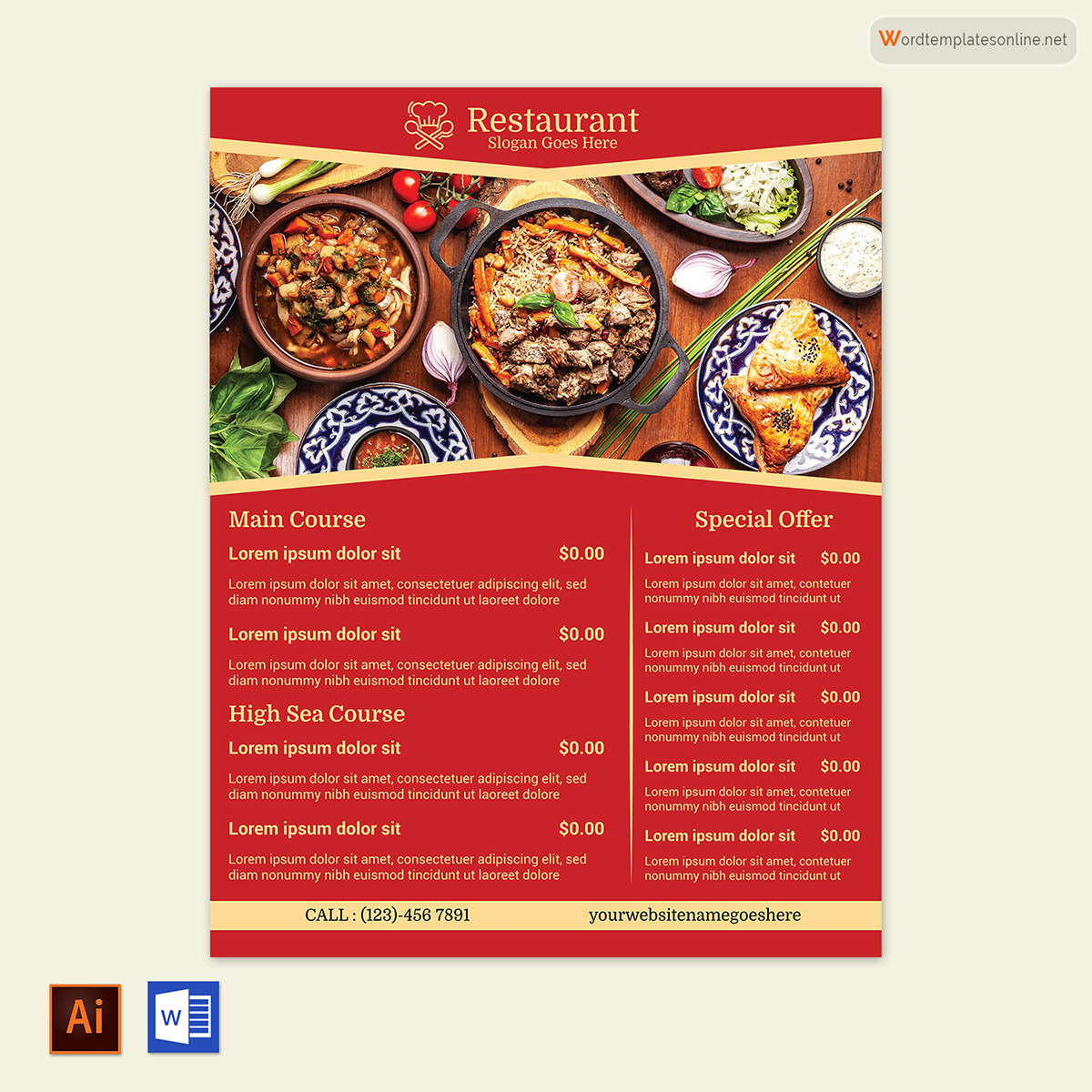
How to Create a Restaurant Menu?
Creating an excellent menu is all about planning. Start by defining the overall objectives and goals of the menu layout. Also, consider how customers will use it – will they read it on their mobile phones or on paper? Essentially, you want to create something appealing and readable.
The following steps aim to create a professional, easy-to-use restaurant menu:
Select a theme of your choice
A theme is an overall visual design of a menu, and it should be consistent with the overall branding of your restaurant. Also, consider the cuisines and other contents you want to include in the menu.
Write the names of the items and their costs
Next, create a menu items list – for each item, write the name of the food or meal and its price. You can pick 10-12 items that align with the restaurant concept. For a restaurant that operates throughout the day, opt to include a morning menu (breakfast and lunch) and an evening menu (lunch and dinner). Also, include beverages. For a new restaurant, avoid including more than 10-12 items.
Pricing is a crucial determinant of profitability in a restaurant. Therefore, when setting the price of a menu item, keep in mind its profit margin or markup percentage. If the prices don’t translate to reasonable profit margins, consider revising the ingredients list or changing the menu item recipe.
Some of the guidelines when pricing menu items include:
- Appetizers and desserts typically have high markup percentages due to low unit costs.
- Expect steak and other expensive meets to have approximately 50% markup percentages.
- Set markup percentages for pasta dishes and salads at 80-85%.
- Alcohol can have 50-70 % markup percentages but consider the price differences of different alcoholic drinks.
Describe each dish in 10 words
Describe each food or drink item using at least ten words. This will avoid writing lengthy descriptions that are off-putting to readers and guests. The dishes can have descriptive titles.
EXAMPLE
Instead of “pizza,” use “large chicken pizza with pineapple toppings.”
Such a title gives the customers enough information to make choices. You can include a brief description of the ingredients used.
EXAMPLE
Charcoal baked, olive-oil seasoned grilled chicken with parmesan cheese, and baked pineapple toppings pizza.
You should include anecdotes for dishes that are spicier or hotter than most dishes on the menu, dishes that contain commonly allergic ingredients such as peanuts, or dishes meant for customers with special dietary needs such as vegans or gluten-free customers.
Order the item in a logical way
You should order the items sequentially and logically – for example, from appetizers to desserts or simple dishes to complex meals – to make the menu easier for customers to understand.
You can categorize food items on the menu as follows:
- Identify three or so significant sections of your menu
- Assign no more than ten items per section.
- If a section has more than ten items, divide it into two subsections.
Standard sections and subsections include breakfast, lunch, dinner, appetizers, beverages, soup, salad, pasta, main courses, cocktails, etc. After you’re done categorizing, order the menu items, generally in chronological order – breakfast items to dessert.
Choose the colors that match your restaurant style
The style can either follow your brand’s philosophy and style or stand out as something different that attracts your customers. You can use color psychology to find color themes that attain different psychological effects, such as mood on your customers. You can also use color associations to create an impact on your customers.
EXAMPLE
Dark colors are associated with fancy and luxurious restaurant styles as they exude seriousness and professionalism. Warm colors can be used for casual restaurant settings. Bright colors can be used for restaurants with a zanier theme or targeting a young clientele.
Lastly, making the t menu’s color scheme match or complement the interior design is also an effective strategy for attracting customers.
Select a presentation style
The most common presentation styles are horizontal and vertical. Depending on the menu layout and the number of items in each section, it will be easier to read if you use horizontal or vertical presentation styles. The menu can be printed on a binder, gloss paper, wooden clipboard, placemat, or any other alternative.
The type of presentation used would depend on certain things; casual brunch spots can use wooden clipboards, family dining restaurants can use placemats, and upscale restaurants can use binder menus.
Add illustrations of the food
A good menu template has text and visuals to make it appealing to restaurant customers. In addition, you can add a drawing or illustration of each food item. They make the menu look more beautiful and are used to communicate the restaurant’s personality – examples are illustrations of food and drinks. However, illustrations are more preferred as they are universally appealing.
Take prints with a high-quality printer
Make sure you use high-quality printers and paper to portray your restaurant professionally. Do not use home printers even though they may be a cheaper option. Professional printing plays a huge role in the effectiveness of the menu. First, print a few copies of the menu to have samples before printing the final number of needed menus. Then, you can use printing service providers like Staples or other online professional printers.
tip
Typography greatly influences how effective the final menu will be. Therefore, selecting the appropriate typeface is critical. Before settling on a typeface, consider the following factors – the amount of text that comfortably fits the menu page and the menu’s sections. For example, use different typefaces to differentiate food items’ titles and descriptions.
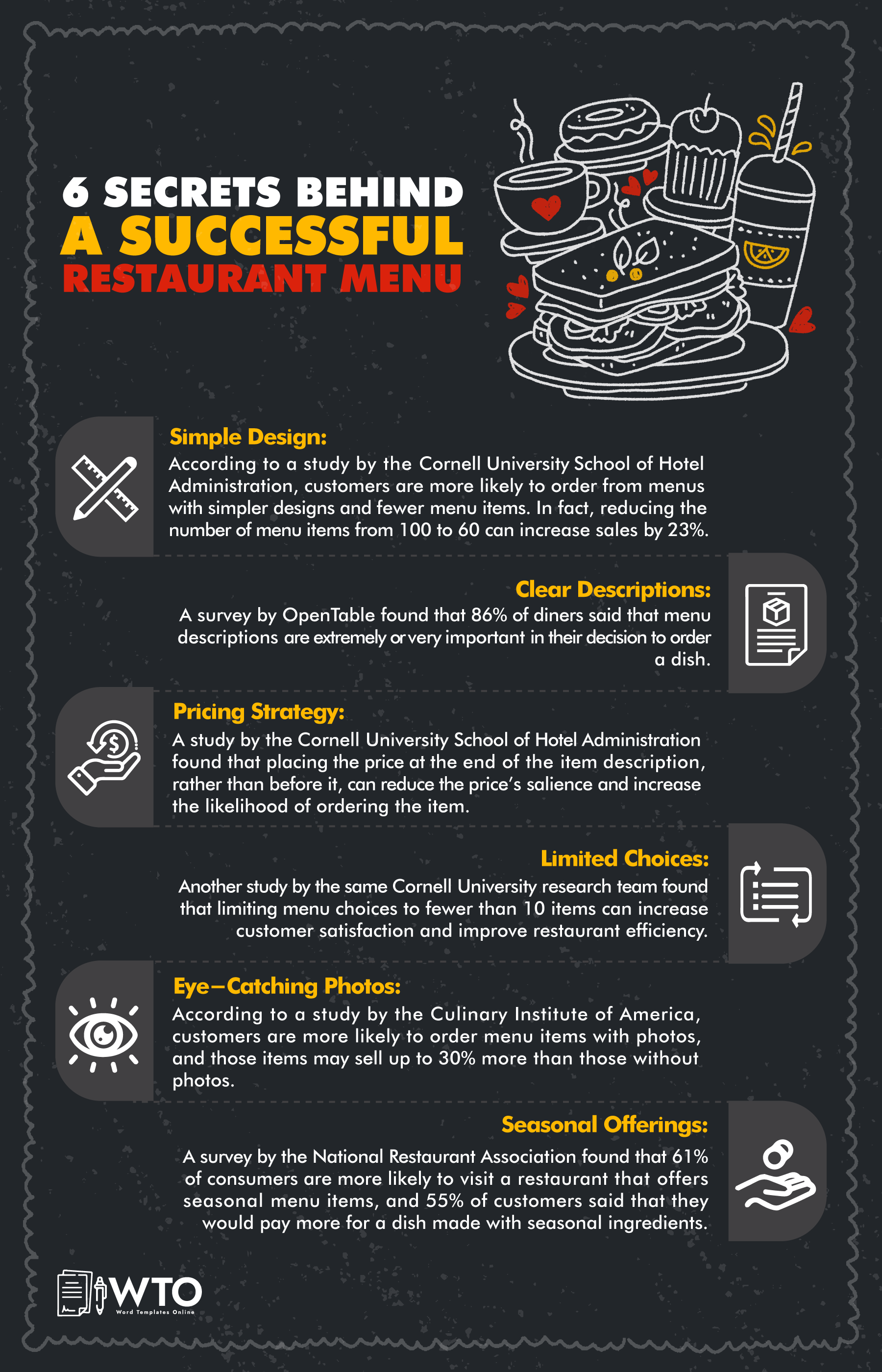
Things to Consider
The creation of the menu requires a lot of considerations. The restaurant’s products will influence the style and content of the menu because it is an extension of your brand.
Below are specific considerations to factor in when creating a restaurant menu:
Use eye-scanning patterns
Scanning patterns make the menu easy to read and understand. Studies have shown that the menu utilizes a high degree of visual literacy – customers tend to read the menu as they would read a book, starting from the top left corner. Therefore, create the menu with that in mind and a logical flow of information.
Many food items on the menu can be overwhelming and make it difficult for customers to find what they want. Therefore, aim to limit the menu items to certain delicacies the restaurant can produce to perfection.
Use psychology
Psychological effects such as color associations can create a specific atmosphere that complements the restaurant or fosters a particular philosophy or customer behavior.
EXAMPLE
It has been observed that if an expensive food item is placed at the front and center of the menu, diners immediately look at the item placed beneath for something they will probably find more affordable. Therefore, that would be a good position to place a food item the restaurant wants to push.
Also, don’t place food items that the restaurant is trying to push at the back of the menu; diners rarely look at that, if ever. Color associations are also beneficial.
EXAMPLE
Red is believed to make dinners hungry, and yellow is known to attract attention.
Also, you can place kiddie meals in the lower-left corner of the left page of the menu if it is a menu that opens up.
Keep it simple and versatile
Make the menu versatile by serving different items in combinations such as chicken with fries. This can guarantee that no food items will spoil due to a lack of preference from customers. This eventually saves money. Also, keep the menu simple. Complicated designs will be intricate for customers to comprehend.
Decide when to update it
A menu is not a rigid list of food items; it should be updated at least once a year or after the preferred intervals. The best time to update the menu is when there has been some change in food items and prices. The update does not have to be a complete redo of the menu; changes can be updated gradually or as needed.
Stay within law
Laws in most states govern menus. “Truth in menu” laws dictate that information provided on the menu be truthful and accurate.
EXAMPLE
If a dish is gluten-free, it must be gluten-free, or if it is “organic,” it should be precisely that.
Do not include untrue information.
Use white space appropriately
Use sufficient white space between each item to make the page less crowded. This will help customers find their meals on the page more quickly. In addition, it has been observed that the appropriate use of white space improves a reader’s comprehension by 30%.
Avoid using the dollar sign
A menu is more effective if the prices are written without the dollar sign. Dollar signs have been reported to prompt diners to limit their spending. This is because it has been observed that diners spend more if dollar signs are not used on the menu. Also, avoid listing prices in a single column as it welcomes price comparison, which may limit customer spending.
Reduce the burden of choice
Presenting too many items on the menu can be overwhelming to the customer. So try to limit the number of choices diners have when they look at the menu. Studies have shown that the food items on the menu shouldn’t be too many or too few. A rational amount of items allows diners to order faster, improves the table turn time, and increases the number of guests served.
Choosing a place to eat is typically stressful; having an endless list on the menu adds to this frustration. A short menu would be better suited for a BOH (back house operations) restaurant as it is simpler to manage.
Harness the power of words
The power of words can be used to create an emotional connection with the customer and make sales.
EXAMPLE
A word like “farm fresh” provokes basic emotions such as safety and trust.
Such descriptive words also foster customer satisfaction which leads to positive feedback provided the dishes meet customer expectations. As a result, descriptive words have increased sales by 27%. Examples of other descriptive words are crispy, tasty, savory, finger-licking, etc.
Use photos of food
Photos are also a valuable tool for promoting menu items. Pictures help diners visualize the food items they want to order and help in studying or recognizing new dishes or food items. Photos also help to create an emotional connection with diners and entice them, thereby increasing sales.
Studies show that using photos increases sales by 30%. However, you should always use high-quality photos – low-quality photos devalues the menu. You can also use photos on the restaurant’s online platforms.
Suppose you opt not to print the photos on the menu, maybe due to the high cost of printing quality photos. In that case, you can include the restaurant’s social media handles in the menu to redirect customers to view the food items online. Also, update photos on social media accounts.
Design with all senses and mind
Use the template design to your advantage. Use a visually viable, aesthetically pleasing design that feels pleasant to touch. A working menu is very crucial. If the restaurant uses a hanging menu, also create in-hand copies to give to people with visual impairments. You can also develop a digital menu with QR codes for easy access. This allows customers to use their phones to view the menu, which would be convenient for most customers.
Optimize your online menu and website
Provide an online menu on the restaurant’s website. This is an effective method of allowing diners to review the menu before deciding to visit the restaurant. You should create a PDF and HTML text menu format–this gives customers the flexibility to view the menu from different devices. Use high-quality photos that give as much information as possible in the menu to assist customers in deciding what to order. The online menu should also reflect the restaurant’s brand.
Key Takeaways
- The restaurant menu is a significant and effective way to promote your venue and sell food.
- The best way to create more effective menus is by using the correct elements, such as visual aids, text, color, etc., on a template.
- Personalizing the menu and tailoring it to match the restaurant’s brand philosophy is an effective way of creating a functional menu.
- An effective menu should not be too long or too short – each section should have at least 8-12 items.
- The menu should be made with the customers in mind as much as it is meant for the restaurant. It should target how to market what the restaurant offers to diners and help diners make quick and satisfactory decisions on what to order.
- It is advisable to utilize a restaurant’s online presence to push its menu to customers. Some customers will typically review the online menus on the restaurant’s website and social media pages before deciding to visit.
- It doesn’t matter if you have just opened a restaurant, has been in operation for years, or are just planning to open one; it is always essential to have a high-quality and well-planned menu template to ensure your business has continued success.




